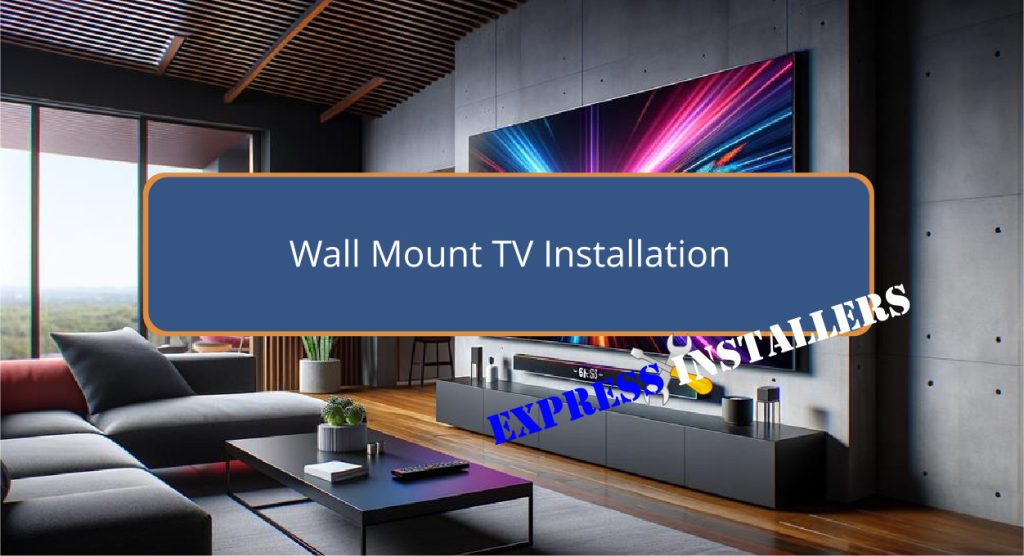
To install your wall-mounted TV, you’ll first need to determine your wall type—brick or plasterboard—as it affects the installation process.
Use a spirit level to verify your TV bracket marks are level before drilling into studs for plasterboard or using wall plugs for brick walls.
Choose a bracket that supports the weight of your TV and matches the VESA hole pattern.
For a clean setup, manage cables with covers or raceways and consider brackets that allow easy cable access.
Always use heavy-duty anchors for safety, especially with larger TVs.
Following these steps not only secures your TV but also maintains a professional look and feel at home.
Discover more tips below to optimise your viewing experience.
Quick Summary
- Determine the wall type (brick or plasterboard) to choose appropriate fasteners and tools for installation.
- Use a spirit level to accurately mark the bracket’s position for a level setup.
- Select a TV bracket that is compatible with the TV’s VESA hole pattern and exceeds the TV’s weight.
- Install the bracket securely into the wall, using anchors for plasterboard or wall plugs for brick walls.
- Prefer to have this comfortably done for you? Fill out the Form Below for instant quotation and same-day TV wall mounting service.
Essential Installation Steps
Before you begin the installation of your wall mounted TV, it’s important to determine the type of wall you’re working with—be it brick or plasterboard. This step is significant as it influences the entire process of mounting your TV.
Once you’ve identified the wall type, use a spirit level to make precise marks where your TV bracket will go. This guarantees your TV will be perfectly horizontal.
Next, drill holes at the marked spots. If you’re dealing with plasterboard, make sure these align with the wooden studs to provide a secure hold.
For brick walls, you’ll need wall plugs to make certain the screws have something to grip.
Now, attach the bracket firmly to the wall. Check with the spirit level again before you tighten the screws fully; this prevents any potential tilting.
Then, fix the mounting bracket to the back of your TV. Confirm all holes align and connections are secure before you lift the TV onto the wall mount.
Finally, tackle cable management to keep things tidy. Use cable covers or raceways to hide wires and maintain easy access for adjustments.
If you’re unsure at any stage, consider hiring a professional service from local experts for a safe and secure installation. Fill out the Form Below.
For added stability and to support larger TV sizes, consider using heavy-duty anchors to mitigate the weight impact on the plasterboard and prevent wall damage.
Choosing the Right Bracket
After determining the wall type and installing the mounting bracket, your next vital step is selecting the right bracket for your TV.
Start by checking the VESA standard, which pinpoints the hole pattern on the back of your TV, guaranteeing the bracket you choose will fit perfectly.
Your choice in bracket type hinges on your desired functionality. Fixed brackets are great if you’re happy with a static viewing angle.
However, if you want some flexibility, tilting brackets allow for vertical adjustments, enhancing the viewing angle and reducing glare.
For maximum versatility, full motion brackets let you swivel and extend the TV, offering ideal views from different positions.
Don’t overlook the weight of your TV. Confirm the bracket’s weight capacity exceeds the weight of your TV to avoid any risks. This is essential for a secure installation.
Also, examine the mounting hardware that comes with the bracket. For heavier TVs, you might need to invest in heavy-duty anchors or screws to make sure everything stays firmly in place.
Choosing the right bracket isn’t just about fit and function—it’s about safety and stability, guaranteeing your TV wall mount setup remains secure and enjoyable.
To ensure optimal cable management and maintain a clean aesthetic, consider a bracket with integrated cable management solutions, as these can significantly reduce visible wire clutter.
Cable Management Tips
Managing cables effectively can transform your TV area from a messy to a sleek and organised space.
When you install your wall-mounted TV, plan your cable routing carefully to maintain a clean look and avoid visible clutter.
Use cable covers or raceways to neatly conceal the cables along the wall. This not only enhances the appearance but also protects the wires from damage.
Make certain your HDMI, power, and other cables are easily accessible. This allows for seamless connectivity with your devices and simplifies future adjustments or additions.
Consider opting for wireless options for streaming devices to reduce cable clutter even further and provide more flexibility in device placement.
It’s vital to regularly check your cables for wear and to verify all connections are secure. This helps maintain peak performance and safety.
By keeping these points in mind, you’ll guarantee that your wall-mounted TV not only looks great but functions flawlessly too.
Frequently Asked Questions
How Much Does It Cost to Get Your TV Wall Mounted?
You’ll spend from £120 for professional services, considering the TV size, mount type and wall material. Adding cable management will influence the increase. DIY could save money, however, the years of experience a professional brings to the table is invaluable.
Can You Install a Wall Mount TV by Yourself?
You can mount your TV alone with the right tools like a stud finder and drill. Consider wall type, mounting height, and cable management for safety and aesthetics. Always follow DIY installation tips and troubleshooting advice.
Conclusion
Congratulations on making it this far! You’ve grasped the essential steps, picked the perfect bracket, and mastered cable management.
Now, you’re all set to enjoy your newly mounted TV with a sleek, professional look.
Remember, taking your time to get it right pays off, ensuring your setup is both safe and stylish.
Happy viewing!
